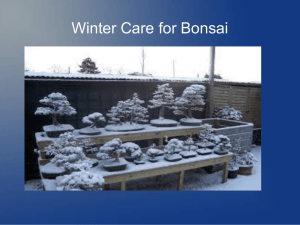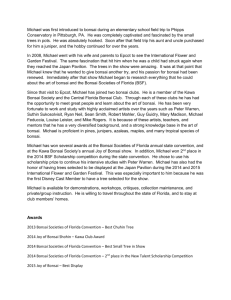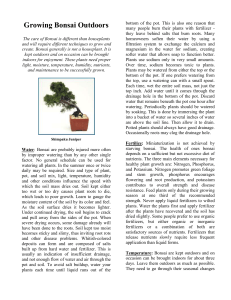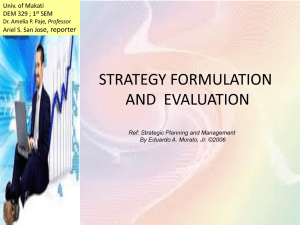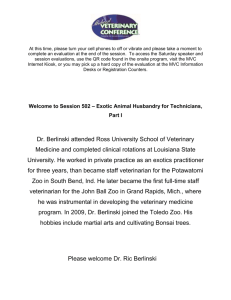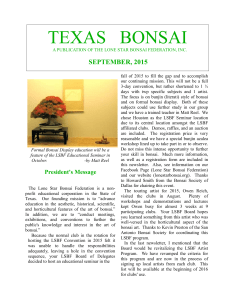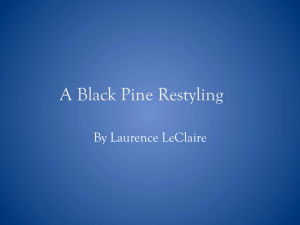Pottery Exhibition 2015 - National Bonsai Foundation
advertisement
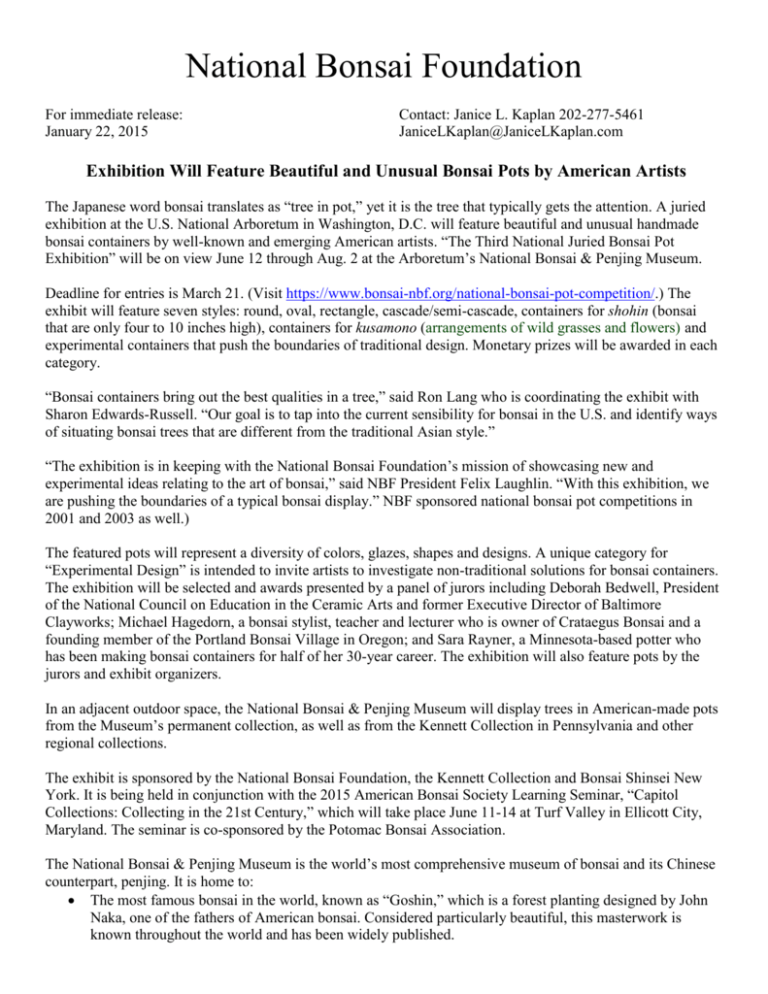
National Bonsai Foundation For immediate release: January 22, 2015 Contact: Janice L. Kaplan 202-277-5461 JaniceLKaplan@JaniceLKaplan.com Exhibition Will Feature Beautiful and Unusual Bonsai Pots by American Artists The Japanese word bonsai translates as “tree in pot,” yet it is the tree that typically gets the attention. A juried exhibition at the U.S. National Arboretum in Washington, D.C. will feature beautiful and unusual handmade bonsai containers by well-known and emerging American artists. “The Third National Juried Bonsai Pot Exhibition” will be on view June 12 through Aug. 2 at the Arboretum’s National Bonsai & Penjing Museum. Deadline for entries is March 21. (Visit https://www.bonsai-nbf.org/national-bonsai-pot-competition/.) The exhibit will feature seven styles: round, oval, rectangle, cascade/semi-cascade, containers for shohin (bonsai that are only four to 10 inches high), containers for kusamono (arrangements of wild grasses and flowers) and experimental containers that push the boundaries of traditional design. Monetary prizes will be awarded in each category. “Bonsai containers bring out the best qualities in a tree,” said Ron Lang who is coordinating the exhibit with Sharon Edwards-Russell. “Our goal is to tap into the current sensibility for bonsai in the U.S. and identify ways of situating bonsai trees that are different from the traditional Asian style.” “The exhibition is in keeping with the National Bonsai Foundation’s mission of showcasing new and experimental ideas relating to the art of bonsai,” said NBF President Felix Laughlin. “With this exhibition, we are pushing the boundaries of a typical bonsai display.” NBF sponsored national bonsai pot competitions in 2001 and 2003 as well.) The featured pots will represent a diversity of colors, glazes, shapes and designs. A unique category for “Experimental Design” is intended to invite artists to investigate non-traditional solutions for bonsai containers. The exhibition will be selected and awards presented by a panel of jurors including Deborah Bedwell, President of the National Council on Education in the Ceramic Arts and former Executive Director of Baltimore Clayworks; Michael Hagedorn, a bonsai stylist, teacher and lecturer who is owner of Crataegus Bonsai and a founding member of the Portland Bonsai Village in Oregon; and Sara Rayner, a Minnesota-based potter who has been making bonsai containers for half of her 30-year career. The exhibition will also feature pots by the jurors and exhibit organizers. In an adjacent outdoor space, the National Bonsai & Penjing Museum will display trees in American-made pots from the Museum’s permanent collection, as well as from the Kennett Collection in Pennsylvania and other regional collections. The exhibit is sponsored by the National Bonsai Foundation, the Kennett Collection and Bonsai Shinsei New York. It is being held in conjunction with the 2015 American Bonsai Society Learning Seminar, “Capitol Collections: Collecting in the 21st Century,” which will take place June 11-14 at Turf Valley in Ellicott City, Maryland. The seminar is co-sponsored by the Potomac Bonsai Association. The National Bonsai & Penjing Museum is the world’s most comprehensive museum of bonsai and its Chinese counterpart, penjing. It is home to: The most famous bonsai in the world, known as “Goshin,” which is a forest planting designed by John Naka, one of the fathers of American bonsai. Considered particularly beautiful, this masterwork is known throughout the world and has been widely published. An almost 400-year-old white pine bonsai that survived Hiroshima. It was in one family for six generations before they donated it to the museum. A 200-year-old pine bonsai donated by the Emperor of Japan, one of two trees that flanked the entrance to the imperial household. It was given as a symbolic gesture of good will between the two countries. Bonsai that were presented to Presidents Reagan and Clinton. Arboretum Information Located at 3501 New York Avenue NE (a 10-minute drive from downtown Washington), the Arboretum is a U.S. Department of Agriculture research and education facility and a living museum. It is free and open to the public Friday through Monday. In addition to the National Bonsai & Penjing Museum, highlights include the annual spring display of azaleas; the National Capitol Columns; the two-and-a-half acre National Herb Garden; and Washington Youth Garden, a program of the non-profit Friends of the National Arboretum. Admission to the Arboretum is free. For more information, visit www.usna.usda.gov or call 202-245-2726. About the Sponsors The National Bonsai Foundation was established in 1982 to sustain the National Bonsai & Penjing Museum. It partners with the National Arboretum by offering financial support and advice to the museum. The private/public collaboration enables the museum to promote the art of bonsai and penjing to visitors through masterpiece displays and educational programs while also fostering intercultural friendship and understanding. For information, visit www.bonsai-nbf.org or call 202-396-3510. The Kennett Collection is a private bonsai garden located in Kennett, Pennsylvania. The collection is comprised of a large variety of bonsai from Japan and other areas around the world. For information visit www.thekennettcollection.com. Bonsai Shinsei New York is metropolitan New York's only school offering comprehensive instruction in the art of bonsai. For information visit www.bonsaishinseiny.com. ### Note to Editors: For digital images, contact JaniceLKaplan@JaniceLKaplan.com.
